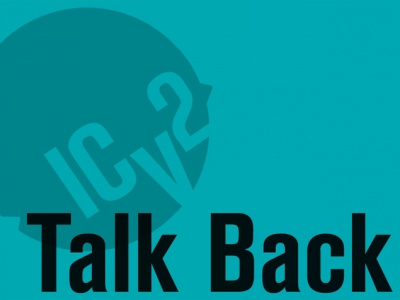 Talk the Talk, Walk the Walk is a weekly column by Kendall Swafford of Up Up Away! in Cincinnati, Ohio. This week, Kendall looks at the three kinds of customers and what how retailers serve them.
Talk the Talk, Walk the Walk is a weekly column by Kendall Swafford of Up Up Away! in Cincinnati, Ohio. This week, Kendall looks at the three kinds of customers and what how retailers serve them.The day after Free Comic Book Day, we started remodeling the store. And yes, I know it's now mid-July, but we're still remodeling the store. Coordinating all of this while trying to maintain regular store hours and keep the disruptions to a minimum means it takes far longer than you want it to, but that's OK. What my customers see is that we continue to invest in ourselves and the store, and in them.
Change is not only inevitable, it's something worth celebrating. Or is it? To some of your customers, they expect regular change. But that steady diet of change can be counter-intuitive to many of your customers. Let’s see if we can discover why.
You see, I believe we have three kinds of customers; the regular, usually weekly or bi-weekly customer. This is the guy (or girl, as we have a fairly high number of female regulars) that comes by regularly every week, usually at or near the same time. And if they're late, you notice. These are the ones that keep your doors open. You may not even like every one of them, but you've come to count on them. You know (or should know) 95% of them by name.
Then there are the frequent or occasional customers. Many of these you know by name, many you don't, but they stop in when the need strikes them. Most gaming customers (if you carry games) fall in this category. Gaming releases don't follow the pattern of comic releases, as they vary both by frequency and even day of the week. Casual readers, those that like comics but prefer a complete story in a trade or graphic novel, are in this group.
And then there are the strangers: vacationers, parents bringing their children in (also known as Saturday shoppers), new to the neighborhood or wanderers checking out stores besides their regular store. Impress them enough on their first visit and they're well on their way to moving up the comic book food chain!
However you define them, it's crucial that you recognize this pattern and how it informs what you do every day. As comic book retailers, we are on a relentless, never-ending seven day cycle, geared toward hawking what's new this week, selling it through and then doing it all over again just a few days later. But that seven day cycle only addresses one segment of your audience, albeit a very important one. Have you geared your store toward only serving the regulars? I know of many stores that only order for subscription customers, and little or nothing for the rack. I know of stores that close on Tuesday, because Tuesday is the day that a regular customer is least likely to visit. I know of a store that insists everything be organized alphabetically, or by a manufacturer's item code, because it makes it easier for them, not the customer.
I ask because sometimes I struggle with how some stores are laid out, and who they pretend to be serving. God knows we all work hard enough at this, so making things easier on ourselves is no great sin, unless it makes it harder for the customer, thereby raising the barrier to making a sale. I've trained the casual customer to find kids' comics in a particular section. Of course, if it just came out this week, it's racked with this week's new stuff, and that can be confusing. Racking it in both places is an option, but one for which we can't afford the space. Some stores don't segregate the new stuff every week, preferring to spread this week's wealth around the store, in whatever spot they deem appropriate. This does the regular a disservice, as they have to hunt for everything that might be new, just to find what came out this week. See the problem?
I'm not looking for answers, or offering any. I bring this up in the hopes that you will recognize that these different customer types exist, even if you define them differently than I do. Whether or not a customer chooses to return to your store is based almost entirely on their comfort level. It's easy to make them feel welcome (although remarkably difficult for some stores, I'm told) the first time they visit. But your store will make an impression on them, and that impression will determine what kind of customer they'll eventually become. Some of these things you have direct control over (cleanliness, organization, lighting, etc), but much of it is beyond your ability to affect directly, except to say that your store is (or should be) greater than the sum of its parts.
Clearly the regulars feel comfortable in your store, that's why they're regulars. The occasionals are comfortable enough, but outside forces may dictate why they don't visit regularly. Distance, family, budget, etc... can all keep them from becoming regulars. Or is it more? Do they prefer another store on a regular basis, but still visit you occasionally or even frequently? How can you determine if they have any resistance to your store? It all comes down to service, selection and price, right? Sr x Sl x P = $4U is the secret formula, I think. It certainly bears exploring, rather than just accepting.
The strangers are just that. Strangers. You've done something to get them to come into your store. And they'll decide within minutes whether or not they'll ever come back again. And it's a thousand little things that contribute to that unconscious decision. Clearly if they wanted to come into your store once, then they are begging for a reason to want to come back.
I used to be in the wedding business. Funny thing about that; you never get a second chance with that bride. You can't make it up to them next week. You get one shot at perfection. My company serviced several hundred weddings every year, and every one of them was counting on us living up to our promises. That's pressure! Think about your store for a minute in those terms. At any moment of any day, someone new could enter your store. Will it be the first of many visits, or their first and last? You decide.
The opinions expressed in this column are solely those of the writer, and do not necessarily reflect the views of the editorial staff of ICv2.com.







